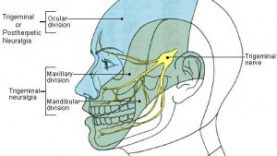Brief low-temperature radiofrequency rhizolysis of the C-1 spinal nerve and C-2 and C-3 dorsal root ganglia was safe and effective for occipital neuralgia with migraine in a retrospective series of 10 patients.
“The pain reduction lasted for an average of 5½ months. That’s a longer duration of action than with nerve blockade alone,” said Dr. Mollie M. Johnston of the headache research and treatment program at the University of California, Los Angeles (UCLA).

Dr. Mollie M. Johnston
While the favorable initial clinical experience with this novel therapy is exciting, the broader significance of the findings lies in a resultant new appreciation of the C-1 nerve root as likely an important player in pain syndromes involving an orbital or periorbital distribution.
“The C-1 nerve root may be an important target for pain syndromes such as occipital neuralgia, migraine, and possibly cluster headache. This target may not be addressed by approaches currently in widespread use,” she said at the European Headache and Migraine Trust International Congress.
The C-1 nerve root has traditionally not been thought of as having a significant sensory function because it doesn’t have dermatomal or cutaneous branches. But recent cadaveric studies have demonstrated that up to half of individuals have C-1 dorsal root ganglia, which typically lie medial to the dural root sleeve and inferior to the vertebral artery. Moreover, persons without C-1 dorsal root ganglia often have C-1 rootlets joining the spinal accessory nerve (J. Neurosurgery 2011;115:929-33). These cadaveric findings suggest a sensory function for the C-1 nerve root; however, until Dr. Johnston’s study, the pain referral pattern associated with this sensory function wasn’t known.
It’s well established that the dorsal rami of the C-2 and C-3 nerve roots contribute to the auricular nerve, the greater and lesser occipital nerves, and the third occipital nerve. These nerves are known to send sensory input from the occipital region to the periauricular region, the vertex, the C-2 and C-3 facet joints, and the cervical musculature, which is why they, too, were targeted for rhizolysis, Dr. Johnston explained.
The novel treatment for occipital neuralgia she and her coworkers have developed at UCLA entails a two-step neurosurgical procedure. First comes fluoroscopically guided provocation testing at the C-1 through C-3 level, followed by blockage of the nerve roots with anesthetic plus steroids. In a later separate procedure, the surgeon performs brief low-temperature radiofrequency rhizolysis.
Dr. Johnston presented a retrospective series of 10 patients with the distinctive, burning electricaltype pain of occipital neuralgia, 6 of whom also had migraine. The patients with migraine experienced orbital or periorbital pain referral upon direct stimulation at the C-1 level; those without migraine did not.
Nine of 10 patients had a positive nerve block, with either transient or sustained pain relief. The seven patients who didn’t experience sustained pain relief as a result of C-1, -2, and -3 nerve blockade subsequently underwent brief low-temperature radiofrequency rhizolysis. Four of the seven responded with a greater than 50% reduction in pain, headache days, and need for rescue medications; their responses lasted for an average of 5.5 months. The other three patients had a lesser response or no response.
No side effects or complications occurred as a consequence of the procedure. Future controlled studies are planned.
Dr. Johnston reported having no relevant financial disclosures.


0 Comments